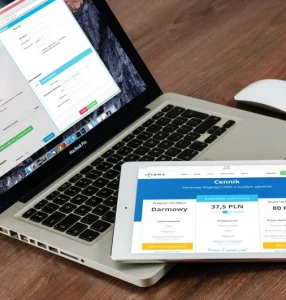Securing funding is one of the most critical challenges small business owners face. Business grants offer a valuable source of capital that doesn’t need to be repaid, providing a lifeline for many entrepreneurs. In this blog, we will explore how to apply for a $10,000 small business grant, an opportunity that can significantly impact your business growth and sustainability.
Understanding the intricacies of Business Grants is crucial for any small business owner aiming to secure such funding. Not only do these grants provide financial support, but they also offer a sense of validation and credibility. This guide will walk you through the entire process, from understanding what small business grants are to submitting a compelling application.
Applying for a business grant can be daunting, but with the right preparation and knowledge, you can increase your chances of success. This blog will break down the steps and provide essential tips to help you navigate the application process effectively. Whether you’re a startup or an established business, this $10,000 grant can be a game-changer.
Understanding Small Business Grants
What are Small Business Grants?
Small business grants are financial awards provided by various entities, including government agencies, private companies, and non-profit organizations, to support business activities. Unlike loans, Business Grants do not require repayment, making them a highly attractive option for entrepreneurs looking to fund their operations or expansion. These grants can cover various needs, from startup costs to research and development, marketing, and more.
Grants are typically awarded based on specific criteria and are aimed at achieving particular objectives, such as economic development, innovation, or supporting underrepresented groups. Understanding the different types of Business Grants available can help you identify which ones are suitable for your business and increase your chances of securing funding. For example, some grants are aimed at supporting women-owned businesses, while others might focus on technology startups.
The process of applying for Business Grants involves thorough research and careful preparation. You need to understand the grantor’s objectives and ensure your business aligns with their goals. This alignment is crucial for crafting a compelling application that stands out among the competition. By understanding what small business grants are and their purpose, you can strategically position your business to benefit from these financial opportunities.
Types of Small Business Grants
There are several types of small business grants, each designed to support different business needs and objectives. Government grants, for example, are funded by federal, state, or local government agencies and are often aimed at fostering economic development, innovation, and community projects. These grants can be highly competitive and require detailed applications, but they offer substantial funding opportunities.
Private sector grants are provided by corporations, foundations, and non-profit organizations. These Business Grants often focus on specific industries or causes, such as technology, education, or environmental sustainability. For instance, tech companies might offer grants to startups developing innovative solutions, while foundations might support businesses that address social issues.
In addition to government and private sector grants, there are also niche grants tailored to specific demographics or business stages. For example, there are grants specifically for women entrepreneurs, minority-owned businesses, and startups. Understanding the different types of Business Grants available allows you to target those that best match your business profile and needs, enhancing your chances of securing the funding.
Preparing to Apply for a $10,000 Small Business Grant
Eligibility Criteria
Before applying for a $10,000 small business grant, it’s essential to understand the eligibility criteria. Each grant has specific requirements that must be met, which can include factors such as business size, industry, location, and the purpose of the grant. Carefully reviewing these criteria is crucial to ensure that your application is considered. For instance, some Business Grants might only be available to businesses operating within certain industries or geographic regions.
In addition to industry and location-specific criteria, many grants also have requirements related to the business’s financial health and operational status. For example, some grants may be targeted at startups, while others might focus on established businesses looking to expand. Ensuring that your business meets these eligibility criteria is the first step in preparing a successful application.
Another critical aspect of eligibility is understanding any demographic or mission-related requirements. Some grants are specifically aimed at supporting women-owned businesses, minority entrepreneurs, or businesses that contribute to community development. By aligning your business with these criteria, you can increase your chances of being selected for the grant.
Necessary Documentation
Gathering the necessary documentation is a vital part of the grant application process. Most Business Grants require a comprehensive set of documents that provide detailed information about your business operations, financial status, and future plans. Commonly required documents include a business plan, financial statements, tax returns, and legal documentation such as business licenses and incorporation papers.
A well-prepared business plan is particularly important as it outlines your business goals, strategies, and how you plan to use the grant funds. This document should clearly articulate your business vision and demonstrate how the grant will help you achieve your objectives. Financial statements, including profit and loss statements, balance sheets, and cash flow statements, provide a snapshot of your business’s financial health and are crucial for showing your business’s viability and potential for growth.
In addition to these documents, some grants may require specific information related to the grant’s focus. For example, if applying for a grant aimed at promoting environmental sustainability, you might need to provide details on your business’s eco-friendly practices or initiatives. Having all necessary documentation prepared and organized will streamline the application process and ensure that you submit a complete and compelling application.
The Application Process
Step-by-Step Guide to Applying
Applying for a $10,000 small business grant involves several key steps, starting with identifying the right grant opportunities. Begin by researching available Business Grants and selecting those that align with your business needs and goals. Utilize resources such as government websites, grant directories, and industry associations to find suitable grants.
Once you have identified potential grants, carefully read the application guidelines and requirements. This step is crucial to ensure that you meet all eligibility criteria and understand the application process. Prepare a timeline to keep track of deadlines and milestones, ensuring that you submit your application on time.
Next, start gathering and preparing the required documentation. This includes your business plan, financial statements, and any other necessary documents. Write a compelling grant proposal that clearly outlines your business objectives, the need for the grant, and how you plan to use the funds. Be concise and specific, highlighting how your business aligns with the grantor’s goals. Finally, review your application thoroughly before submission to ensure it is complete and error-free.
Common Mistakes to Avoid
When applying for Business Grants, avoiding common mistakes can significantly increase your chances of success. One common error is failing to thoroughly read and follow the application guidelines. Missing crucial details or not adhering to the specified format can lead to your application being rejected outright.
Another frequent mistake is providing incomplete or inaccurate information. Ensure that all required documents are included and that the information provided is accurate and up-to-date. Incomplete applications are often disqualified, so double-check that you have included everything requested.
Lastly, failing to articulate the impact of the grant on your business can weaken your application. Clearly explain how the $10,000 grant will benefit your business and contribute to its growth. Highlight specific projects or initiatives that the grant will fund and how these align with the grantor’s objectives. By avoiding these common mistakes, you can strengthen your application and improve your chances of securing the grant.
Post-Application Tips
Following Up on Your Application
After submitting your application for a $10,000 small business grant, it’s important to follow up appropriately. Many grantors provide a timeline for when decisions will be made, so mark these dates on your calendar and check back accordingly. Following up shows your continued interest and commitment, but ensure that you adhere to any guidelines provided about the follow-up process.
While waiting for a response, use this time to prepare for potential interviews or additional information requests. Some Business Grants may require further clarification or an interview to discuss your application in more detail. Being prepared for these scenarios can make a positive impression and demonstrate your readiness and professionalism.
If your application is successful, promptly acknowledge and accept the grant. Follow any instructions provided and begin planning how to implement the grant funds as outlined in your application. If your application is not successful, request feedback if possible, and use this information to improve future applications. Persistence and continuous improvement are key to eventually securing the funding you need.
Utilizing the Grant Money Effectively
Once you receive the $10,000 small business grant, it’s crucial to utilize the funds effectively. Begin by revisiting your business plan and ensuring that the grant money is allocated as outlined in your application. This may involve funding specific projects, purchasing equipment, or expanding your marketing efforts. Clear and strategic use of the funds will maximize their impact on your business.
Monitoring and tracking the use of grant funds is also essential. Keep detailed records of all expenditures and how they contribute to your business objectives. This not only ensures compliance with any reporting requirements but also helps you evaluate the effectiveness of the grant in achieving your goals.
Lastly, consider the long-term impact of the grant on your business. Use this opportunity to build a solid foundation for future growth and development. Leverage the grant to create sustainable improvements, such as investing in technology, hiring skilled staff, or enhancing your products or services. By utilizing the grant money effectively, you can ensure that it has a lasting positive impact on your business.
Applying for a $10,000 small business grant can be a transformative opportunity for your business. By understanding what Business Grants are, preparing thoroughly, and following a strategic application process, you can increase your chances of securing this valuable funding. Remember to utilize the grant money effectively to maximize its impact on your business’s growth and sustainability.
Are you ready to take the next step in securing funding for your small business? Contact us today for professional grant writing assistance and consultation. Our experts are here to help you navigate the application process and increase your chances of success. Let’s work together to turn your business dreams into reality!






